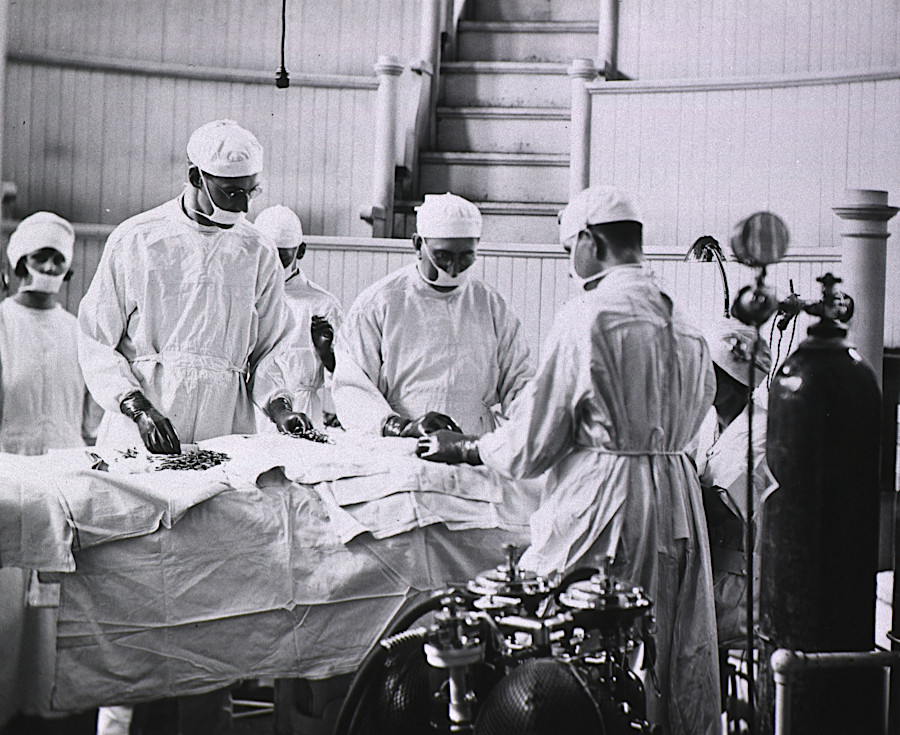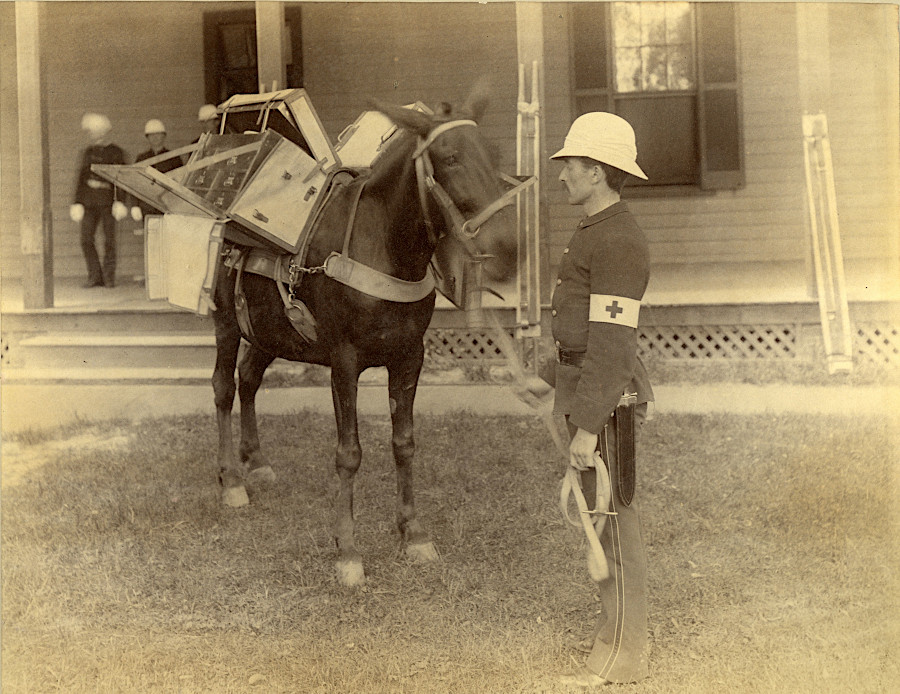
preparing for surgery in 1914
Source: National Library of Medicine, University of Virginia Hospital: Operating Amphitheater scene in 1914

preparing for surgery in 1914
Source: National Library of Medicine, University of Virginia Hospital: Operating Amphitheater scene in 1914
For 20,000 years, Native Americans found medicines in plants and other natural items. Their healers also sought to enhance spiritual connections to cure ailments, as did the European colonists who prayed for the intervention of a divine power.
How the mind can affect human health, independent of any medicine or other treatment, is still poorly understood. What is known is that almost all of the elements in living creatures, the fundamental building blocks of life, started elsewhere. The hydrogen atoms, which compose 90% of all atoms in the human body, may be over 13 billion years old and date from the original formation of matter after the Big Bang at the start of our universe. Nearly every other atom is at least 4.6 billion years old, and was created in a previous star before the solar system was established.1
When the European explorers arrived in the Chesapeake Bay, they brought infections that may have killed a large percentage of Native Americans. Estimates vary widely regarding how disease affected the Native Americans before the first permanent colonists arrived in 1607, with some scholars calculating a death rate as high as 90%.2
One obvious question is why did the European diseases devastate the Native Americans in Virginia, while North American diseases had only a small impact on the colonists?
Jared Diamond argues that the unbalanced reaction to diseases is based on the different shapes of the Eurasian and American continents. The Eurasian continent has far more land mass in the same latitudes. While plants and animals were domesticated in Eastern North America, MesoAmerica, and the Andes/Amazon (and not just in Eurasia and Africa), agriculture in the Western Hemisphere stayed limited. Domesticated plants in the Western Hemisphere could not be expanded east or west, because there was little land at the same latitude with the same climate. Equally, agriculture could not expand north or south because the domesticated plants were not adapted to the different growing seasons at different latitudes.
It took a long time before corn, beans, and pumpkin squash from Mexico were bred to grow in latitudes above 25 degrees. As described by Diamond:3
Diamond presents his perspective on how humans in the Eastern Hemisphere created dense, agriculture-dependent communities far more quickly than humans in the Western Hemisphere. In those agricultural communities, humans established large, dense herds of animals - and the "crowd diseases" of those animals became the human diseases (measles, tuberculosis, influenza) that European explorers brought to the New World. The Native Americans had not developed high-density herds of animals. The Native Americans had not been exposed to the same animal diseases - and had not created the environment in which different diseases could have developed in North America.
Source: Science Museum of Virginia, Lunch Break Science: The Search for an Influenza Vaccine in Virginia during the 1918 Epidemic

at the time of the Spanish-American War, medics used horses to get equipment to patients on the battlefield
Source: National Library of Medicine, Medicine - Military - Equipment: Pack Saddle Medical Department and medical and surgical chests in position, Fort Myer, Virginia